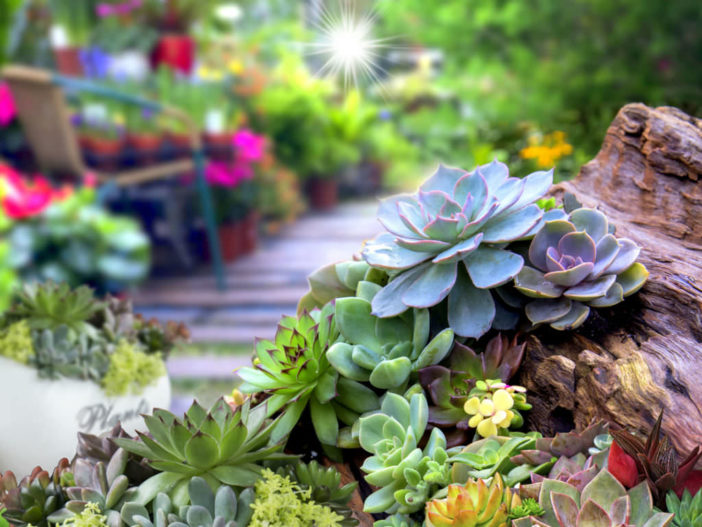Succulents may be the best choice if you want to decorate your home or office with gorgeous yet low-maintenance plants. Their resilient nature makes them the best choice for people just beginning to tap into their green thumb or those with little time to tend to their plants. However, while it is true that succulents require less watering unless you are prepared to learn how to take care of these plants properly, you could wind up accidentally killing them.
1. Watering
Watering is arguably the most important aspect to focus on when growing succulents because it is one of the fastest ways to kill them.
Succulents are prone to root rot, which is caused by damp roots. For this reason, the soil should only be soaked when you water, and watering is only necessary when the soil is dry to the touch. This is important because other plants require water more often and sometimes even need their soil to be moist constantly. Mixing up the requirements could kill your succulents.

2. Light
Succulents need a lot of sunlight daily, with the minimum recommendation being three hours of direct sunlight.
When indoors, find the window with the most sunlight and put your succulents there to promote healthy growth. The key is to keep these plants out of the shade, whether inside or outside unless you are in an extremely hot climate. Succulents in harsher, hotter conditions benefit from shade during peak sun hours. They are durable and can survive in various temperatures due to their resilient nature.
3. Soil
The ability of succulents to keep hydrated is one trait most professional athletes should revere. This means that they prefer soil that drains quickly. When planting succulents outside, make sure you plant them in areas where the ground does not tend to stay moist or hold water, as this type of location could drown your succulents and cause root rot. If you plan on keeping your plants in pots, ensure they have drainage holes at the bottom before adding soil, especially if you keep the plants inside. This will help prevent overwatering.
The soil best for succulents consists of perlite, gravel, and volcanic rock. There are many succulent-specific soil mixes available, too.
As with all gardening, watching your plants and noticing changes, like drooping leaves, can help you understand each plant's needs. Every plant is different, and despite general guidelines for care, they require individual attention to ensure they grow into healthy, flourishing succulents.
Source: quickenloans.com
Links
- Succupedia: Browse succulents by Scientific Name, Common Name, Genus, Family, USDA Hardiness Zone, Origin, or cacti by Genus